Adaptation
Alice Gong Xiaowen, Min-Jia, Zoe Koke, Graham Wiebe
January 5 - February 3, 2024
Exhibition Text
Checklist
Alice Gong Xiaowen, Min-Jia, Zoe Koke, Graham Wiebe
January 5 - February 3, 2024
Exhibition Text
Checklist

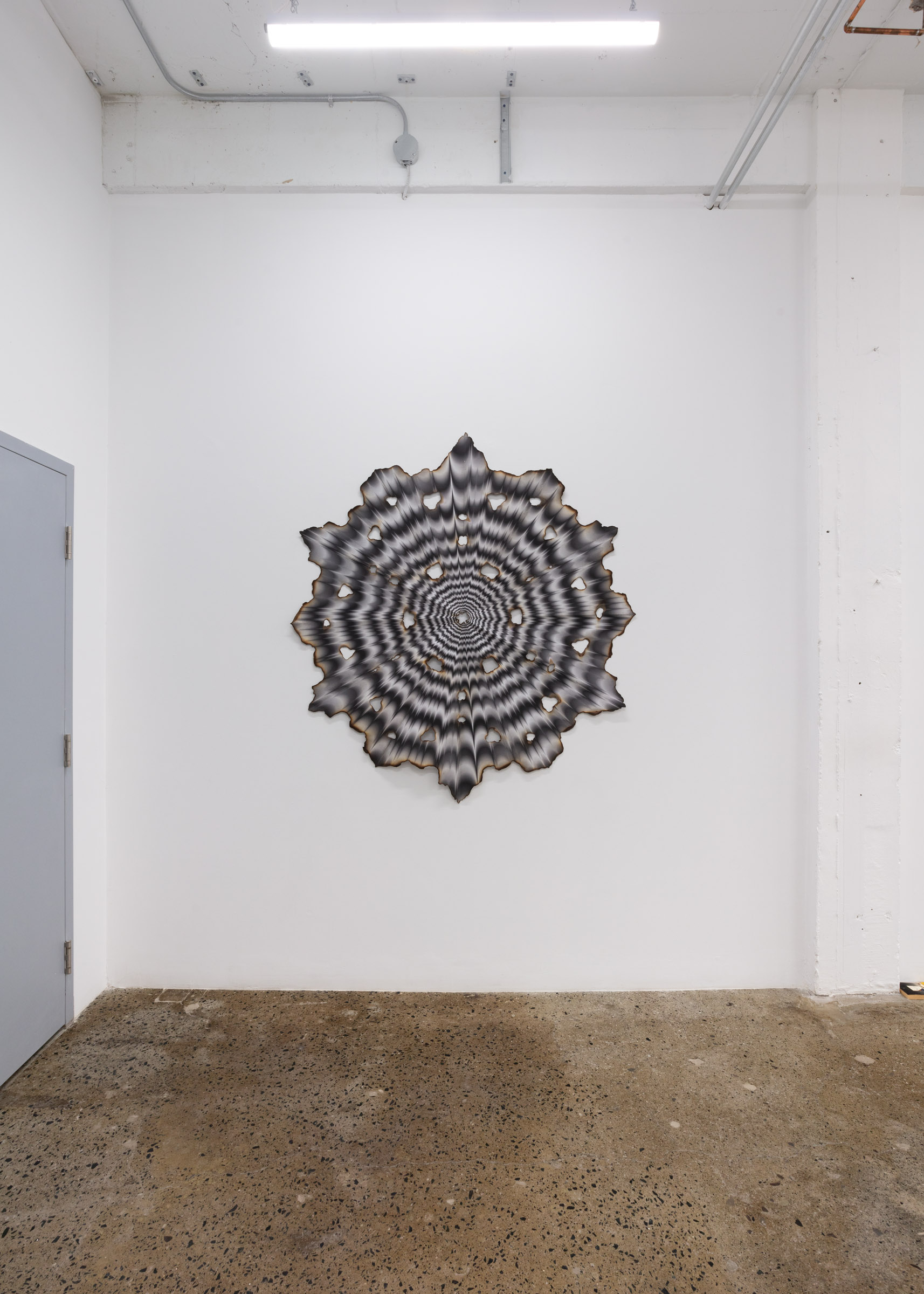










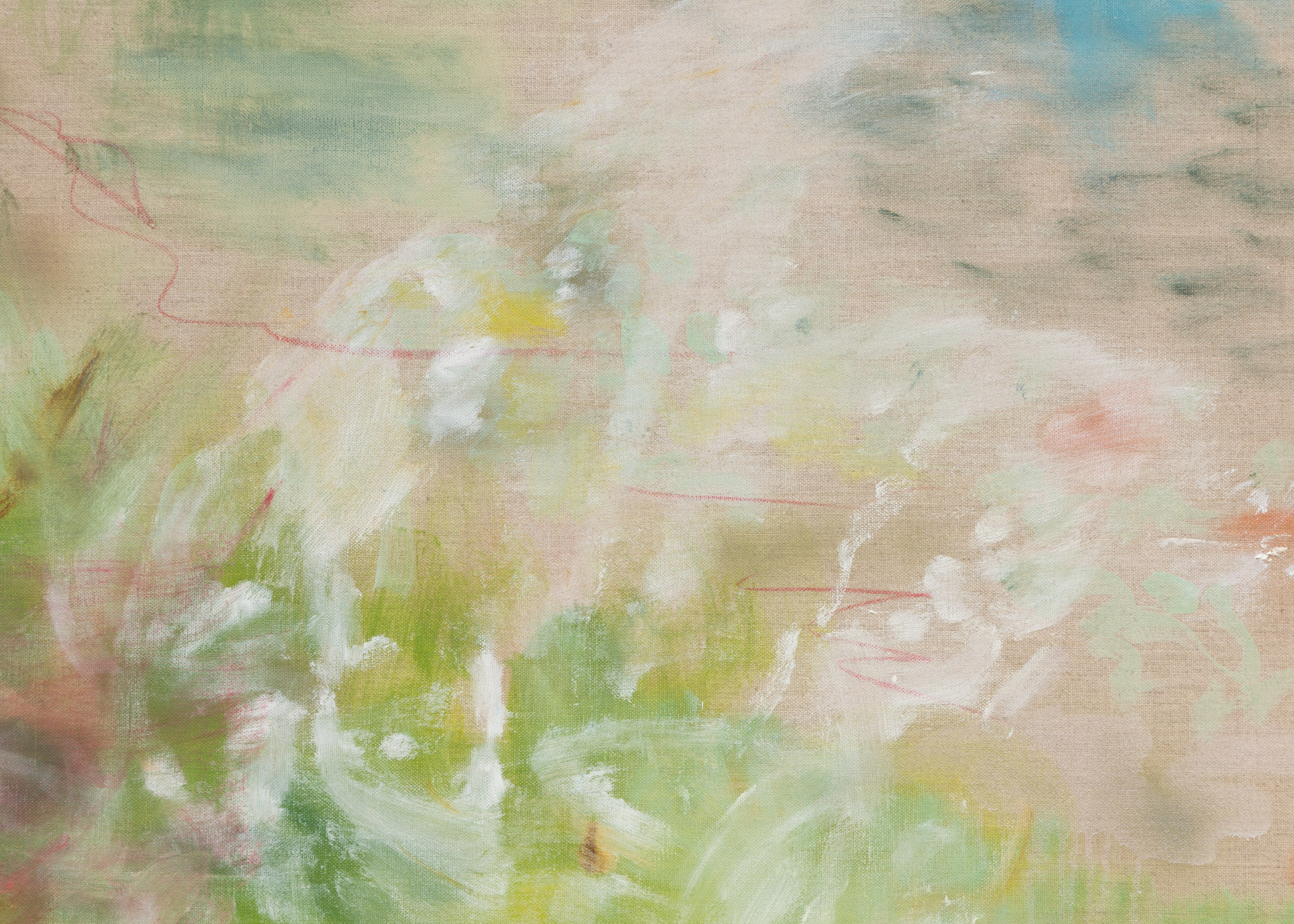














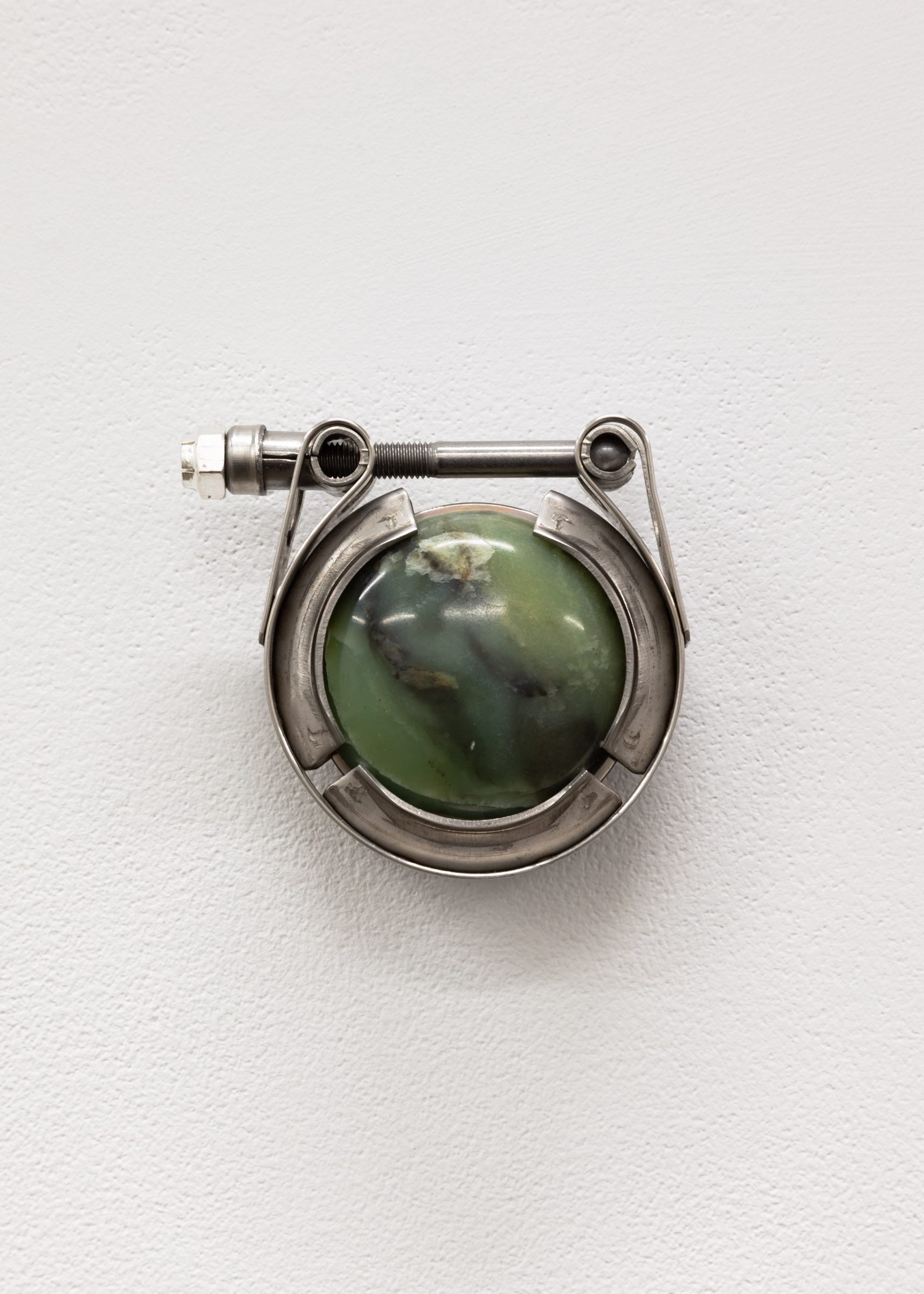


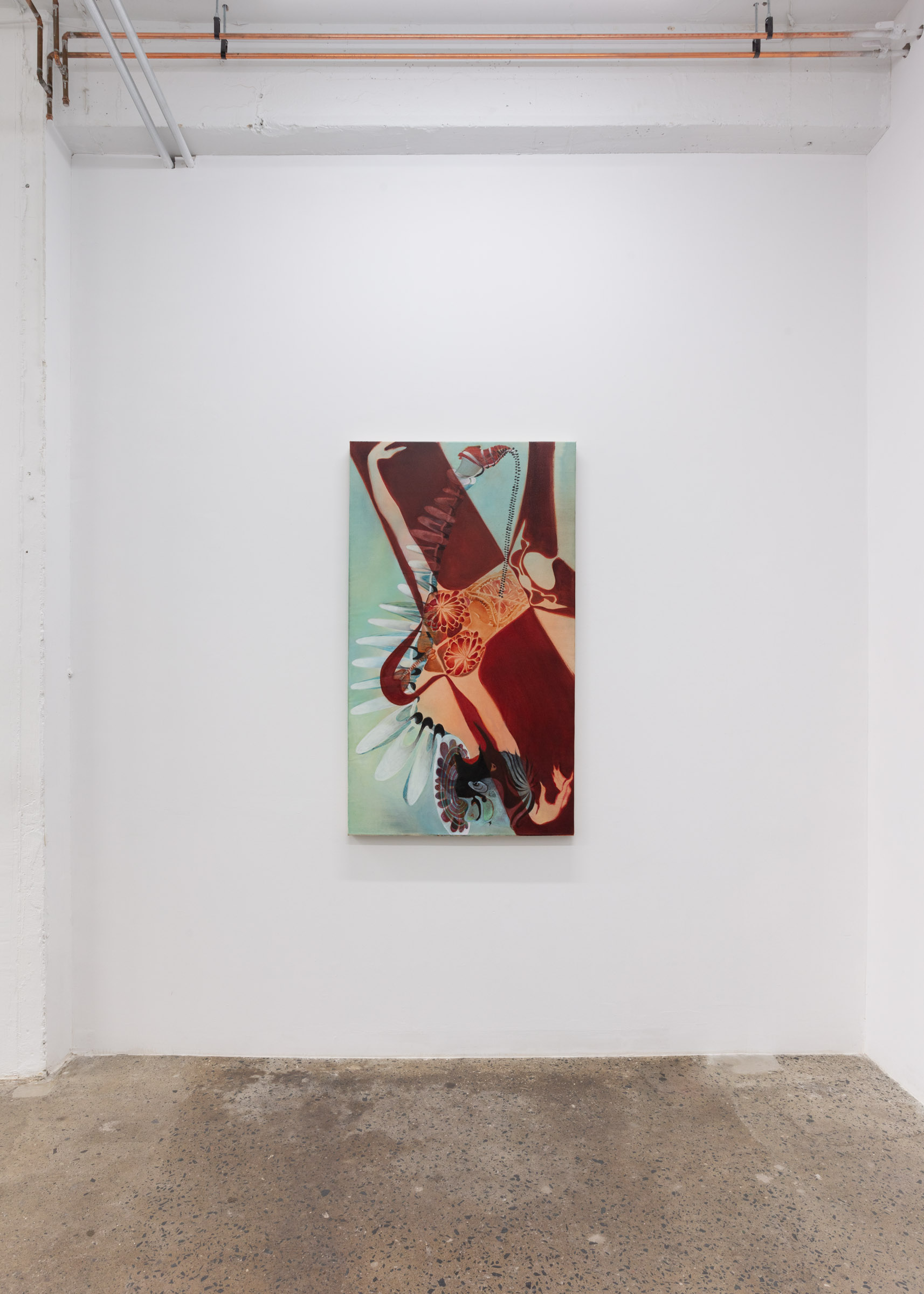



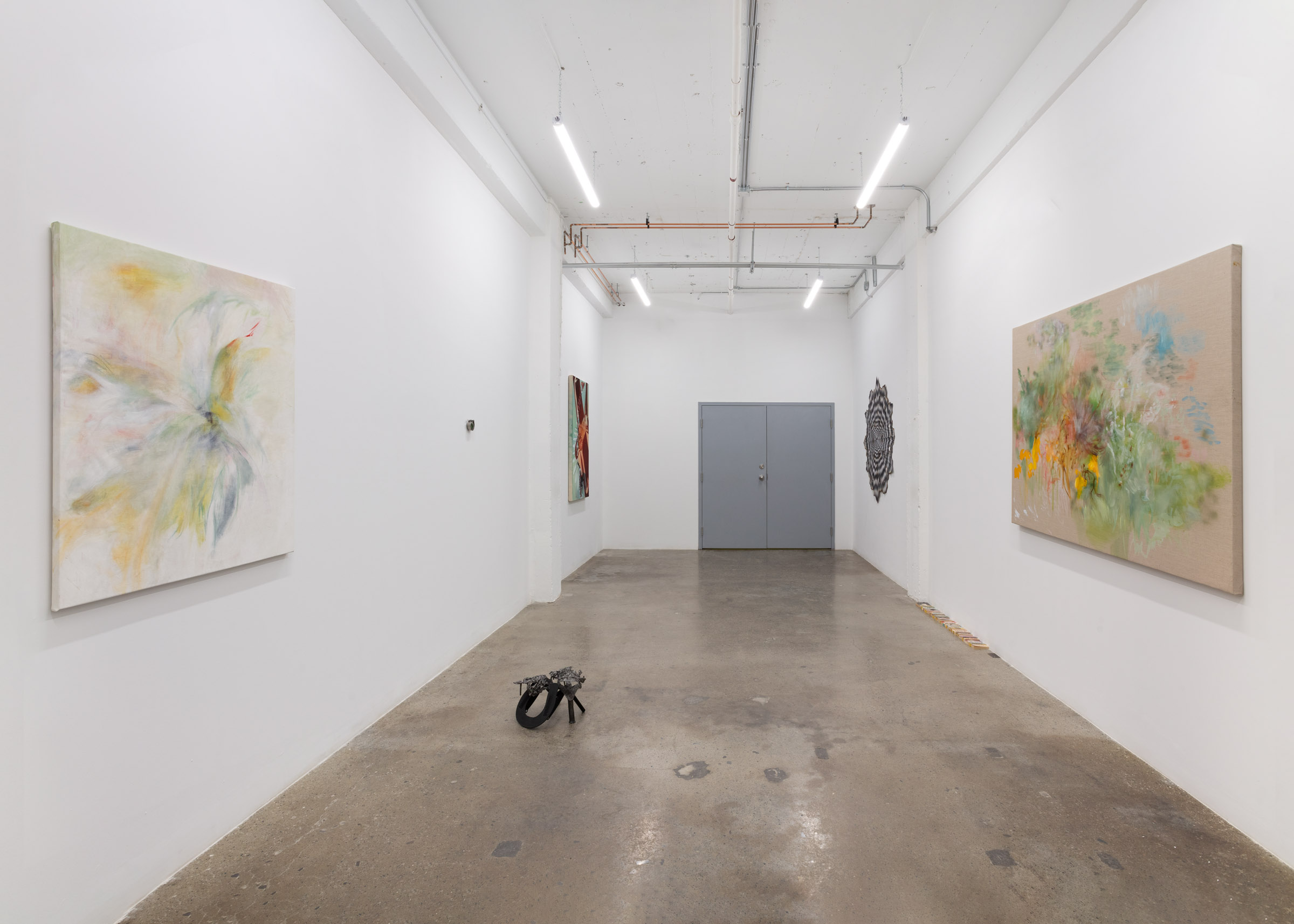
Charlie Kaufman [Voiceover]: Do I have an original thought in my head? My bald head. Maybe if I were happier, my hair wouldn't be falling out. Life is short. I need to make the most of it. Today is the first day of the rest of my life. I'm a walking cliché. I really need to go to the doctor and have my leg checked. There's something wrong. A bump. The dentist called again. I'm way overdue. If I stop putting things off, I would be happier.
So begins Adaptation, the 2002 film where Charlie Kaufman, a self-loathing writer played brilliantly by Nicholas Cage, struggles to adapt the book The Orchid Thief into a screenplay. Looking for reasons to explain why he feels so bad, that is, searching out the flaws in his own design, the character rattles on with the desperation of a new year’s resolution (It continues: What do I need to do? I need to fall in love. I need to have a girlfriend. I need to read more, improve myself …) Borrowing both the title and theme from the film, the works in this exhibition look at how contemporary subjects are compelled to adapt to be able to endure inhospitable and unpredictable environments.
In Alice Gong Xiaowen’s Slight malar flush (2022), a pair of oval-shaped wall sculptures are cast from deflating dough. Their size and orientation (as “portraits”) and title references facial structure, and in particular, a condition characterized by the plum-red discolouration of the high cheeks. Malar flush is a kind of intensive blushing whose own adaptive purpose serves to indicate vulnerability in humans to avoid conflict. Xiaowen’s floor sculpture To arrest a blush (2023) contains similar elements: iron pieces cast from pinched dough and a plastic cradle that would hold a face receiving a massage or acupuncture. Xiaowen is interested in the threshold moments when matter transforms into material culture, and how identity, performed in part through the use objects that comprise said material culture (dough, soapstone, etc.), seeps out of a subject, uncontrollable like blushing.
Graham Wiebe is similarly considerate of how materials undergo alchemical processes of transformation and “charging up.” His body of work deals intently with the aesthetics, objects, and rituals that comprise the sprawling industry of contemporary self-help and holistic wellness. Through observation and participation in a variety of practices including sensory deprivation, water burial, acupuncture, and hypnosis, Wiebe interprets how the pursuit of physical and spiritual health in capitalist culture is perversely bound up in objects. How To Uncover Your SUBLIMINAL Influence … (2023) is the largest today of his ongoing series of book works made from the spliced covers of self-help paperbacks. Cut out from their original contexts, the work creates a kind of manic mantra that mirrors the appropriative pastiche of pursuing individual wellness under capitalism. Snowflake #32 (2023) is a mass-produced psychedelic poster burnt into the shape of a unique snowflake, again part of an ongoing series where Wiebe activates materials by elemental forces, in this case, fire. Acting as a crematorial gesture, Wiebe interprets rituals that are employed to mitigate loss and mortality.
The figure in Min-Jia’s Floater (2023) hangs upside down in diagonal tilt, wingspan open, as if about to dive off the edge of the painting. Bird-woman hybrids in erotic entanglement recur in their work, bound up in mythical scenes of transformation amid eggs, feathers, tongues, and fruits. In this work, an osteopathic staircase encircles the figure, becoming its leg and travelling through its pointed toe before turning into an umbilical chord that ends at the cross point of its intestinal core. Illustration and “image-making” (as opposed to “painting”) is at the centre of Min-Jia’s practice. They cite queer anime as an inspiration, noting in turn, the genre’s roots in Japanese 17th-19th century ukiyo-e, “pictures of the floating world,” which often pictured geishas, courtesans, and the sensual activities newly available to the rising merchant classes. The stories Min-Jia tells, in both images and writing, are narratives of migration and adaptation that abound through surreal, metamorphic imagery.
Zoe Koke paints abstracted landscapes marked by environmental trauma and hidden violence. Working in Los Angeles, enveloped in extreme climate and striated between the opposing ideologies of individualism and freedom, Koke is interested in how collective consciousness might be worked out in contemporary art making. Searching for a less laboured way to communicate, Koke employs both the techniques and ghosts of colour field abstraction, heavy with contemporary inflection, as well as impressionist impulses - “I think like the impressionists, I am painting light, and obstructions to light, interventions of nature: air, branches, fog, smoke.”[1] In Feeding Ground and Flower (both 2023) references to species of flora and fauna known for their biological adaptivity emerge and disappear within an ever-shifting landscape. The works in Adaptation explore the ways in which subjecthood is never aimed toward a fixed resolution, but is rather sustained and extended though change. Responding to myriad economic, environmental, political and social actors, the bodies referenced in Adaptation embrace transformation as a means through which these external realities might be negotiated with; amending, mutating and rewriting what is given so that they might better navigate an otherwise compromising environment.
- Kate Whiteway, 2024
[1] Interview with Zoe Koke and Nicholas Campbell, by Marie Heilich for the exhibition Agony/Serendipity, Smart Objects, 1 Los Angeles, February 17 - April 8, 2023, http://smartobjects.la/media/uploads/2023/02/ SMART_OBJECTS_Agony_Serendipity.pdf.
Alice Gong Xiaowen (b. 1994, Beijing, China) is an artist and a knowledge seeker. She holds a BFA from School of the Art Institute of Chicago and is currently completing an MFA from Yale School of Art. Alice maintains an interdisciplinary studio practice wherein she utilizes matter (including haptic memories) to disturb value by imagining the collapse and reconfiguration of object-hood. She is drawn to processes of indexing as meditations on anticipating loss as it allows action to have a hand in mitigating that which is becoming distant, disintegrating, slipping, yet anew. Translation helps witness the exhaustive effort to hold onto that which is constantly in a stage of atrophy—to make relics from remnants that are no longer exercised via a reconjuring of memory through sound, texture, and impression. She has recently been included in a two-person show at House of Seiko, San Francisco and group exhibitions at Silke Lindner, New York and Duplex, New York.
Min-Jia (b. 2001, Ürümqi, China) is an artist and writer based in Berlin and Toronto. Their work approaches narratives of migration and adaptation through a surreal and metamorphic lens. Min-Jia is currently studying the traditional art of Shaanxi Huaxian shadow puppetry under master Wang Tianwen in Xi'an, China. Min-Jia has recently exhibited work at A.I. Gallery with Linseed Projects, London; X Museum, Beijing; UdK Rundgang, Berlin; and MKG127, Toronto. In 2021, Min-Jia self-published a collection of writings and paintings titled The Sky The Well.
Zoe Koke (b. 1989, Calgary, Canada) holds an MFA from UCLA (2019) and a BFA from Concordia University (2013). Exhibitions in 2023 include fuckgirl collapse, Room 3557, Los Angeles; the second space (solo exhibition), Mai 36 Galerie, Zurich; a serpent’s tail (with Rike Droescher), Alice Amati, London; the shape of time, Lindon&Co, London; and Agony/Serendipity (with Nicholas Campbell), Smart Objects, Los Angeles. Other past exhibitions include Re/flex, Patel Brown, Toronto (2020); Doesn’t whine by blue moon, Ochi Projects, Los Angeles (2020); Celebration at INSECT Gallery, Los Angeles; American Myth, Washer and Dryer Projects, Salt Lake City (2019); and Made to look natural, Smart Objects, Landers (2018). Koke makes visual art, writings and films in Los Angeles, California.
Graham Wiebe (b. 1994, Winnipeg, Canada) lives and works in Winnipeg. Wiebe has recently exhibited solo and two-person exhibitions at Final Hot Desert in the Great Basin Desert, Utah; Jargon Projects, Chicago; Blinkers, Winnipeg; and group exhibitions at the Utah Museum of Contemporary Art, Salt Lake City, Utah; The Living Art Museum, Reykjavik, Iceland; Palazzo San Giuseppe, Polignano a Mare, Italy; afternoon projects, Vancouver; and BSMNT, Leipzig.
